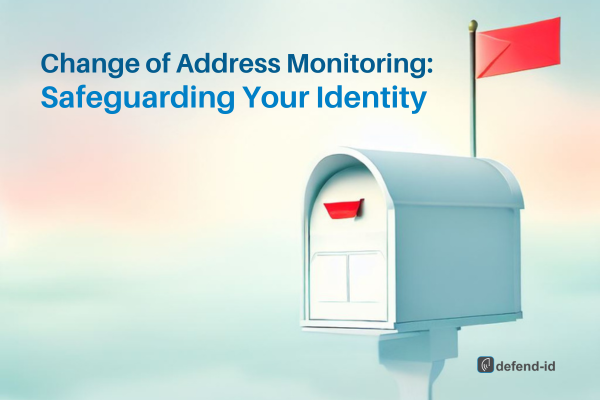
by Brian Thompson | Nov 10, 2023 | Identity Theft
As someone who holds our military community in high esteem, I’ve been reflecting on a critical issue we face- identity theft. This isn’t just a civilian problem—it’s a significant concern for our active duty personnel, veterans, and their families. Our national heroes are trained to be battle-ready for any threat to national security. Yet, there’s a front that often gets overlooked – Securing the Home Front: Identity Theft in the Military
Understanding the Risks
A surprising reality: Did you know that as military members, we’re at a heightened risk for identity theft? Reports suggest that nearly 50,000 military consumers have faced this challenge head-on. And it’s not just about the numbers; the consequences of stolen identity can ripple through our lives, causing financial and personal turmoil.
The Vulnerability of Our Forces
- Relocations and Deployments: Our service often requires us to pack up and move, sometimes at a moment’s notice. Each move is an opportunity for personal information to fall into the wrong hands, especially when we’re stationed overseas and focused on the mission at hand.
- A Culture of Trust: We rely on a shared bond of trust, a cornerstone of military cohesion. Unfortunately, scammers exploit this trust, posing as fellow service members or veterans to phish for sensitive information.
How to Fortify Your Defenses
We’re no strangers to defense strategies, but the tactics differ when it’s about protecting our identities:
- Shredding documents: Before you toss out those orders or reports, shred them. It’s your first line of defense.
- Credit monitoring: Make it a routine – check your credit reports regularly, just as you would maintain your gear.
- Vigilance with personal info: Train yourself to detect scams. If someone asks for personal information over the phone or email, verify their credentials first.
- Strong password protocols: Create passwords as robust as a fortified base. No simple ‘password123’ for us, right?
- Active duty alerts: Just like setting a perimeter, these alerts put a barrier between your credit and potential fraudsters while you serve.
Implementing Active Duty Alerts
Protecting your credit with active duty alerts is akin to having a watch guard for your finances. Here’s how to set it:
- Reach out to one of the three major credit bureaus – Equifax, Experian, or TransUnion. It’s like choosing which guard post to fortify.
- Confirm your identity with solid proof. This process is as essential as verifying clearance for a secured area.
- Initiate the alert, which signals the bureaus to step up their guard and verify any credit requests in your name carefully.
- Renew as required: Just like renewing your duty station orders, keep the alert active to match the length of your deployment.
Your Call to Action
Your financial safety is part of operational security. By staying vigilant, you protect not just yourself but also the integrity of our forces. Keep your personal information locked down, stay alert for signs of breaches, and spread the word. We’re in this fight together – let’s make sure we’re all armed and ready.
Identity theft in the military is prevalent…Stay safe and secure, both on and off the field.
Related Articles:

by Brian Thompson | Nov 8, 2023 | Identity Theft
In today’s hyperconnected world, technology has become an indispensable part of our lives, seamlessly weaving its way into our daily routines. From online banking and shopping to social media interactions and entertainment, technology has revolutionized the way we communicate, work, and engage with the world around us. However, this interconnectedness also brings with it a heightened risk to our personal information, making us vulnerable to identity theft. Identity theft protection in the digital age is something we all should be aware of.
The Double-Edged Sword of Technology: A Balancing Act of Protection and Exposure
Technology plays a dual role in our identity protection: it both shields and exposes our personal information. On the one hand, secure online banking platforms, encrypted communication channels, and password authentication mechanisms help safeguard our financial and sensitive data. Social media platforms, while not entirely secure, allow us to connect with friends and family, share experiences, and stay informed.
However, this same technology can also be exploited by cybercriminals to steal our identities. Phishing scams, malicious software, and data breaches are just a few examples of how criminals capitalize on the convenience and ubiquity of technology to infiltrate our digital lives.
The Evolving Landscape of Identity Theft: Staying Ahead of the Curve
 The methods used by identity thieves are constantly evolving, adapting to advancements in technology and our changing online habits. Phishing scams, once relying on deceptive emails, have become more sophisticated, impersonating legitimate websites and using social engineering techniques to trick users into revealing personal information.
The methods used by identity thieves are constantly evolving, adapting to advancements in technology and our changing online habits. Phishing scams, once relying on deceptive emails, have become more sophisticated, impersonating legitimate websites and using social engineering techniques to trick users into revealing personal information.
Malware attacks, which can infect our devices through malicious links or attachments, can steal data, install spyware, and even lock us out of our devices, demanding ransom payments. Data breaches, often caused by inadequate security measures or human error, can expose millions of personal records, leaving individuals vulnerable to identity theft.
Advanced Identity Theft Prevention Technologies: Leveraging Technology for Your Protection
Fortunately, technological advancements also offer solutions for mitigating identity theft risks. Facial recognition software, when implemented securely, can verify identities and reduce the likelihood of impersonation. Data encryption scrambles sensitive information, making it unreadable to unauthorized individuals. Tokenization replaces sensitive data with unique identifiers, further protecting it from theft.
Practical Tips for Navigating the Digital Labyrinth: Strategies to Safeguard Your Identity
In the digital age, vigilance and proactive measures are essential for protecting our identities. Here are some practical tips to navigate the online world safely:
- Be selective about personal information shared online. Avoid sharing sensitive information like your Social Security number, birth date, or financial account details on social media platforms or public forums.
- Create strong and unique passwords for all your online accounts. Avoid using easily guessable information like birthdays or common words. Consider using a password manager to securely store and manage your passwords.
- Enable multi-factor authentication (MFA) on all your important accounts. MFA adds an extra layer of security by requiring a verification code from your mobile device or email in addition to your password.
- Regularly update your security software and operating systems. Security patches and updates address vulnerabilities that hackers can exploit.
- Be cautious of suspicious emails, links, and attachments. Phishing scams often use these tactics to trick you into revealing personal information or clicking on malicious links.
- Regularly conduct cybersecurity audits of your devices and accounts. Check for unusual activity, suspicious login attempts, or unauthorized charges.
Identity theft can have a devastating impact on individuals, not just financially, but also emotionally and psychologically. The stress, anxiety, and fear associated with identity theft can lead to depression, sleep disturbances, and even post-traumatic stress disorder (PTSD).
The emotional scars of identity theft can linger long after the financial damage is repaired. Victims may struggle with trust issues, a fear of online transactions, and a constant vigilance for signs of further identity theft.
The Power of Individual Responsibility
While technology plays a role in identity theft, individuals have the power to safeguard their identities through their online behavior and security practices. By emphasizing this responsibility, we empower readers to take proactive steps to protect themselves.
Be sure to:
- Create a strong password policy and implement MFA on all accounts.
- Regularly review financial statements and credit reports for unauthorized activity.
- Protect your personal devices with strong passwords, anti-virus software, and firewalls.
- Be cautious of what personal information you share online.
- Educate yourself about identity theft prevention strategies.
By taking these steps, individuals can significantly reduce their risk of becoming victims of identity theft and safeguard their personal information in the digital world. Identity theft protection in the digital age is a real and relevant concern.
Related Articles:
Follow us on LinkedIn

by Brian Thompson | Oct 11, 2023 | Identity Theft, Mortgage
The Hidden Vulnerabilities of Home Buying and Identity Theft are something every borrower should be aware of.
Buying a home is a dream come true for many. It’s a journey filled with excitement, anticipation, and, let’s be honest, a fair bit of “paperwork”. But amidst the hustle and bustle of mortgage applications and loan approvals, there’s a lurking threat that many homebuyers overlook: identity theft.
The Mortgage Process: A Double-Edged Sword
Imagine this: Sarah, a first-time homebuyer, is ecstatic about purchasing her dream home. She diligently provides all the necessary documents to her lender, from bank statements to tax returns. But a few weeks later, she discovers unauthorized transactions on her credit card. Her identity has been stolen, and now her financial stability and credit score are at risk.
It’s a nightmare scenario, but it’s not uncommon. In fact, over 7% of borrowers have their identities stolen, with the average loss amounting to a staggering $1,343, according to the FTC. And the repercussions don’t stop at the individual level. Lenders face the brunt too, with the average default costing them a whopping $50,000, as reported by the Mortgage Bankers Association.
Why is the Mortgage Process Vulnerable?
The mortgage process inherently requires sharing a plethora of personal and financial information. This data, if not adequately protected, becomes a goldmine for identity thieves. Unauthorized transactions, credit lines, and other financial disruptions can severely impact a borrower’s credit score and overall financial health. The ripple effect? Strained finances, jeopardized homeownership, and potential legal battles. Not to mention the emotional strain that impacts the family and their work.
Lenders, It’s Time to Step Up!
While borrowers need to be vigilant, lenders play a pivotal role in safeguarding their clients. After all, a lender’s reputation is built on trust and security. By incorporating identity theft protection programs, lenders not only protect their financial interests but also solidify their position as trusted, customer-centric institutions. It’s a win-win: lenders reduce the risk of loan defaults, streamline operations, and foster stronger customer relationships, while borrowers enjoy peace of mind and financial stability.
What Can Borrowers Do?
- Stay Informed: Knowledge is power. Understand the risks and be proactive in safeguarding your information.
- Ask Questions: When choosing a lender, inquire about their identity protection measures. It’s not just about interest rates; it’s about your overall security.
- Stay Vigilant: Regularly monitor your credit reports and bank statements. If something looks amiss, report it immediately.
- Get the defend-id Checklist and Tips for borrowers
A Final Thought
In the ever-evolving landscape of the mortgage industry, it’s crucial for both borrowers and lenders to stay ahead of potential threats. As a borrower, always remember to prioritize your financial security. And for lenders, consider this: in a market driven by trust, offering comprehensive identity protection isn’t just a service—it’s a commitment to your client’s well-being, all while creating lifetime value.
So, the next time you embark on the home-buying journey, remember to look beyond interest rates and loan terms. Ask your lender about their commitment to protecting your identity. After all, your dream home deserves a dreamy, worry-free experience. Home Buying and Identity Theft do not have to go hand in hand.
related articles:

by Brian Thompson | Sep 28, 2023 | Identity Theft, Mortgage
Why Lenders and Borrowers Should Prioritize Identity Theft Protection. Unraveling the Multifaceted Benefits of Identity Theft Protection in Mortgage Lending and Its Influence on Borrower Choices. Elevating Security in Home Financing and Creating Lifetime Value.
In an era where digital transactions dominate and sensitive information is routinely exchanged, safeguarding against identity theft is not a luxury, but a necessity. Especially in mortgage lending, where intimate financial details are shared, the repercussions of identity theft are grave for both lenders and borrowers. Enlightened lenders offering identity theft protection are not just meeting a need but setting an industry benchmark and gaining a definitive competitive advantage.
Why Lenders Should Offer Identity Theft Protection
- Building Trust and Loyalty:
A lender offering identity theft protection is a lender dedicated to safeguarding borrower’s personal information. This unwavering commitment fosters unparalleled trust, cultivates enduring relationships, and solidifies borrower loyalty – the bedrock of a successful lending enterprise.
- Mitigating Risks and Financial Losses:
Protecting borrowers from identity theft isn’t only about consumer welfare; it’s about securing investments, minimizing the possibility of loan defaults, and reducing potential financial losses. It’s an all-around win!
- Enhancing Brand Image and Reputation:
A robust identity theft protection program isn’t just a security measure; it’s a testament to a lender’s dedication to their clients, significantly bolstering their brand image, reputation, and customer satisfaction.
- Staying Ahead in the Market:
Offering added security features not only differentiates lenders in a saturated market but also serves as a unique selling proposition. In the eyes of discerning borrowers, a commitment to security is a commitment to their well-being.
- Legal and Compliance Advantages:
Aligning with stringent data protection standards, lenders can display adherence to industry best practices, potentially reducing regulatory hurdles and liabilities.
- Technological Edge:
Adopting advanced protection programs shows a lender’s dedication to innovation and combating cyber threats, appealing to tech-savvy borrowers, and highlighting a forward-thinking approach.
Why Borrowers Should Care
- Preserving Financial Stability:
Identity theft can derail financial stability. For borrowers, protection against such calamities is not just an add-on; it’s a fundamental necessity ensuring their path to homeownership stays secure.
- Maintaining Credit Health:
With protection in place, borrowers can support their credit health, shielding their financial future from the ramifications of identity theft.
- Choosing a Caring Lender:
Opting for a lender who prioritizes security is choosing a partner who values and respects their privacy, a crucial factor in the decision-making process.
Real-Life Impact: Testimonials
- “The Recovery Advocate that helped me with my identity theft event and provided everything that I needed to protect myself from problems that may occur in the future. She was very calm and reassuring.” Candy R.
- “My advocate was better than awesome. We tried to settle this without any help, and it was horrible. After we contacted our financial institution and were referred to our advocate, it went smoothly, and she was extremely helpful. Thank you.” David B
- “My Fraud Specialist is a godsend. Her professionalism and knowledge really helped put my mind at ease. I feel like I have a friend looking out for me.” Michael D.
The Decision-Making Factor
When selecting a mortgage lender, borrowers weigh several factors – competitive interest rates, exceptional customer service, favorable loan terms, and in today’s digital age, security. A lender proactively offering identity theft protection conveys a potent message: “We value and protect your privacy.” This assurance can be the decisive factor, tipping the scales in favor of a lender who not only offers loans but also security, trust, and peace of mind. A Lender Elevating Security in Home Financing!
Secure Your Future, Choose Wisely
The integration of identity theft protection in mortgage lending is not just a trend; it’s a vital and necessary evolution. Lenders incorporating such programs stand distinct, and discerning borrowers are taking notice. In a world where data breaches are rife, a lender who champions protection is a lender who earns trust. Trust is the cornerstone of every successful borrower-lender relationship.
Secure your future; choose a lender that prioritizes your security. Lenders, it’s time to step up and offer the protection your borrowers deserve!
Related Articles to Elevating Security in Home Financing:

by Brian Thompson | Sep 20, 2023 | Employee Benefits, Identity Theft, Mortgage
Did you know that something as simple as a change of address can protect or expose you to identity theft? Let’s dive in and discover why change of address monitoring helps in safeguarding your identity!
What is “Change of Address” Monitoring?
Imagine you’re moving to a new house. You’d want all your letters and packages to come to your new address, right? That’s when you inform the post office to redirect all your mail. But what if someone sneaky does this without you knowing? That’s where change of address monitoring steps in. It watches for any changes to your address and alerts you if something looks fishy.
Why is Address Monitoring Important?
- Stay In The Know: With address monitoring, you’ll always know where your mail is heading. No more lost birthday cards or missing bills!
- Spot The Bad Guys: If a sneaky person tries to change your address without you knowing, this tool will quickly let you know.
- Peace of Mind: You can sleep better knowing that you have an extra layer of protection for your personal info.
How Can Criminals Misuse Address Changes?
You might wonder, “Why would anyone want to change my address?” Here’s the scoop:
- Stealing Your Stuff: By rerouting your mail, criminals can snatch credit card offers, checks, or new credit cards before you even know they’re missing.
- Gathering Information: Identity thieves love to collect personal info. With your mail, they can learn a lot about you and potentially misuse it.
- Hiding Their Tracks: If they change your address, you might not get important bills or alerts, giving them more time to cause mischief.
Make Address Monitoring Your Secret Weapon!
You wouldn’t leave your front door unlocked, so why leave your mailbox unprotected? Change of address monitoring is like a security guard for your mail. By being in the know, you can stop identity thieves in their tracks.
*Interesting Fact: According to experts, millions of people have their identities stolen every year, but those with monitoring tools are more likely to catch and stop the bad guys!
Your address is more than just where you live. It’s a gateway to your personal information. By keeping an eye on any changes, you’re not only protecting your mail but also your identity. So, be smart, be safe, and consider adding address monitoring to your safety toolkit!
Remember: Safety first, because your identity is priceless!
Related articles to Change of Address Monitoring: Safeguarding Your Identity:


 The methods used by identity thieves are constantly evolving, adapting to advancements in technology and our changing online habits. Phishing scams, once relying on deceptive emails, have become more sophisticated, impersonating legitimate websites and using social engineering techniques to trick users into revealing personal information.
The methods used by identity thieves are constantly evolving, adapting to advancements in technology and our changing online habits. Phishing scams, once relying on deceptive emails, have become more sophisticated, impersonating legitimate websites and using social engineering techniques to trick users into revealing personal information.

